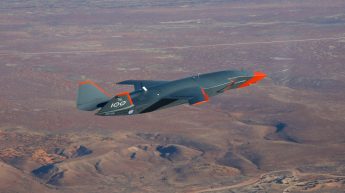
An inaccurate fuel gauge led to a Cessna 441 Conquest being forced to land on the Great Northern Highway in Western Australia’s Kimberley region in March 2018.
An ATSB investigation into the incident revealed undetected water contamination in the tanks likely led to the pilot believing the aircraft had enough fuel to reach its destination in Broome, when in reality it was running on empty.
The pilot and nine passengers on board all escaped uninjured.
The Skippers Aviation Cessna 441 Conquest, VH-LBY, had departed Fitzroy Crossing for Broome in Western Australia during the afternoon of 2 March 2018 on the last sector of a four-sector scheduled passenger flight.
During descent, the FUEL LEVEL LOW annunciators illuminated, and the pilot observed that both fuel quantity gauges indicated sufficient fuel remaining and continued flying towards Broome.
Subsequently the right engine began surging, followed by similar surging from the left engine. The right engine then lost power and the pilot conducted the engine failure checklist.
The pilot declared a MAYDAY and advised air traffic control that, as the left engine was still operating, the aircraft would be able to reach Broome. However, the left engine also lost power and both engines were unable to be restarted.
With both engines not providing power, the pilot assessed that the aircraft would not reach Broome and they tracked to the south towards the Great Northern Highway in the vicinity of Roebuck Plains. The pilot landed the aircraft safely on the highway approximately 21 nautical miles east-south-east of Broome.
The ATSB’s director of transport safety, Dr Mike Walker, said undetected water contamination in the fuel tanks, possibly due to condensation forming in the close-to-empty fuel tanks while the aircraft was sitting in humid conditions following maintenance, resulted in the aircraft’s fuel quantity gauges significantly overreading the level of fuel on board.
The ATSB investigation was unable to determine how the water contamination was not detected despite different pilots conducting fuel quality checks.
“Accurate fuel management is a critical aspect of safe flight operations and it is important to utilise all available means in order to gain the highest assurance that fuel quantity measurement is accurate,” said Dr Walker.
“It is essential that a reliable fuel quantity cross-check is adopted, utilising at least two independent methods and a conservative approach.”
The investigation report notes that although the pilot routinely compared indicated versus calculated fuel quantities, and indicated versus flight-planned fuel quantities, the pilot did not routinely conduct two other methods stated in the operator’s procedures for cross-checking fuel quantity gauge indications (the use of the fuel totaliser, and prior to engine shutdown after a flight, switching the fuel boost pumps off and checking whether either of the X-FER PUMP FAIL annunciators would illuminate).
“Although the operator had specified multiple methods of cross-checking fuel quantity gauge indications for its Cessna Conquest fleet, there were limitations in the design, definition and/or application of these methods,” Dr Walker said.
The primary method used (indicated versus calculated fuel) was self-referencing in nature, and not able to detect gradual changes in the reliability of fuel quantity gauge indications.
The operator’s pilots also did not record (and were not required to record) sufficient information on flight logs to enable trends or patterns in fuel quantity gauge indications to be effectively identified, and pilots did not routinely cross-check information from fuel quantity gauge indications with information from the independent fuel totaliser.
The FUEL LEVEL LOW annunciators likely illuminated approximately 30 minutes before the fuel was exhausted in each tank, and when the aircraft was still within range of suitable alternative airports, the investigation notes.
“Pilots are required to fully understand the functionality of the low fuel warning system on their aircraft and treat any warning annunciations as being accurate unless there is overwhelming evidence otherwise,” said Dr Walker.
Following the incident, the operator increased the frequency of fuel quantity comparison checks to a known quantity, specified clearer requirements for determining discrepancies when using fuel totaliser figures, implemented additional fuel management record keeping, and increased the focus on fuel management procedures during training.















